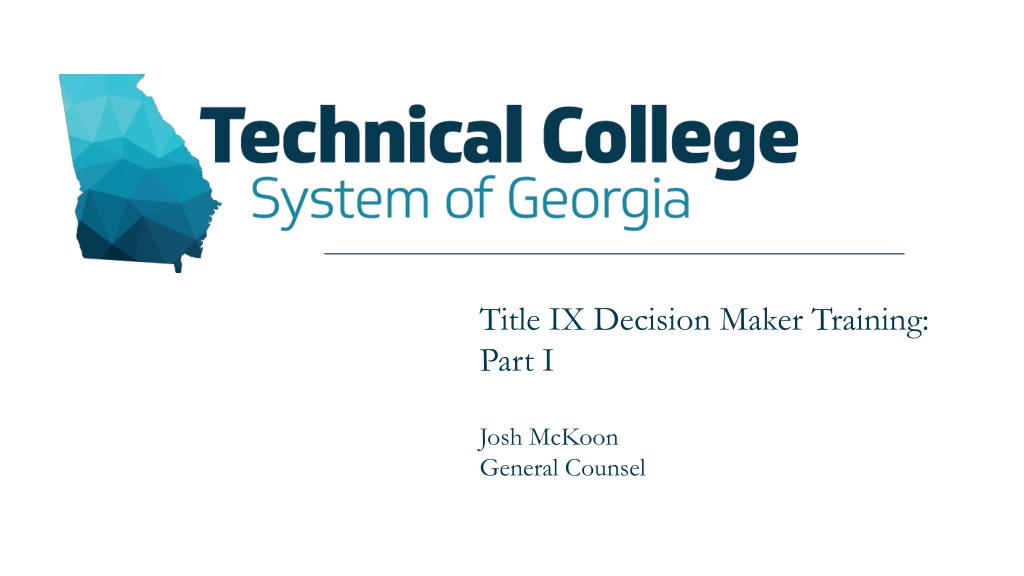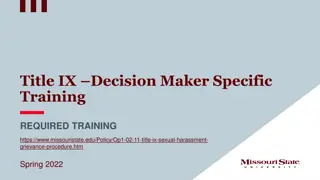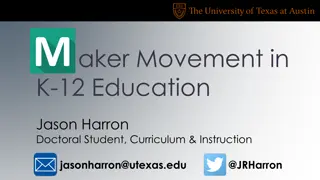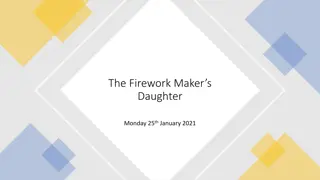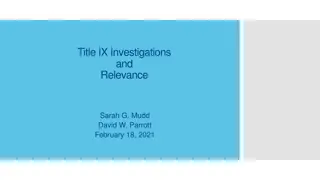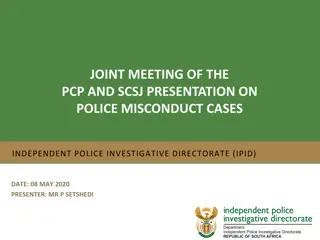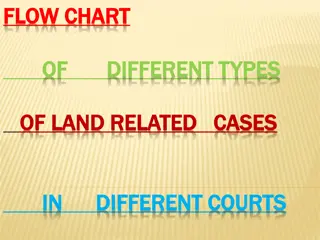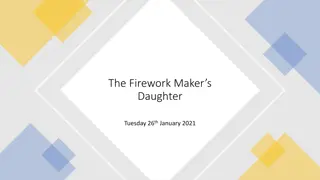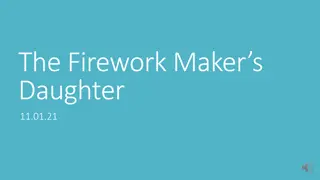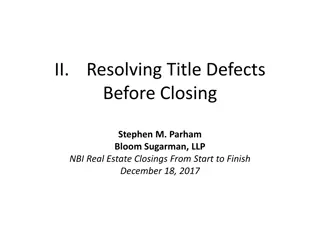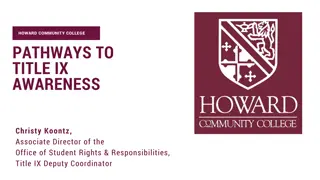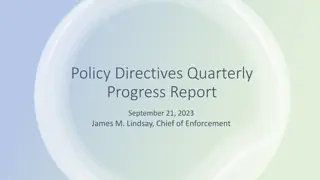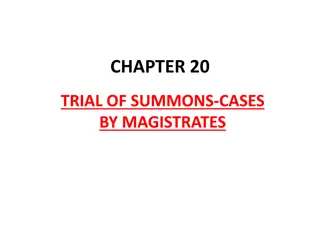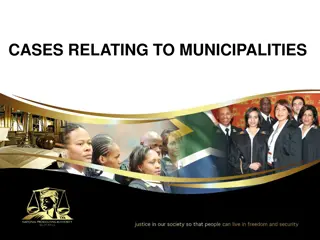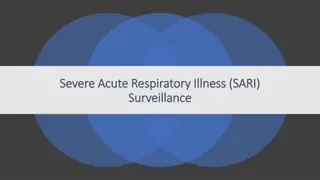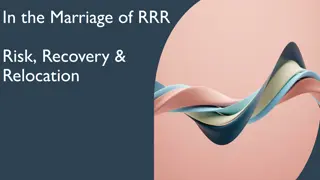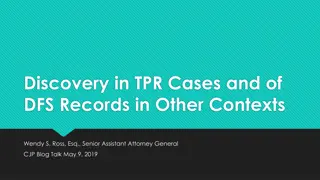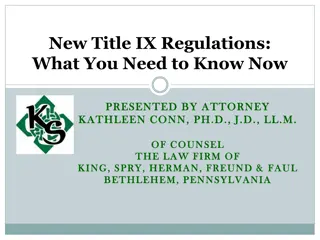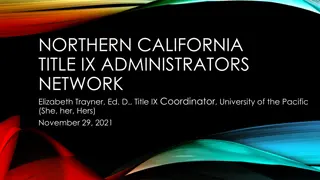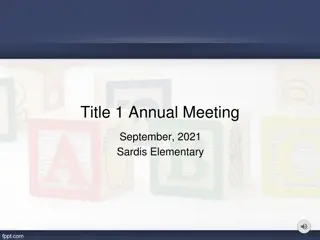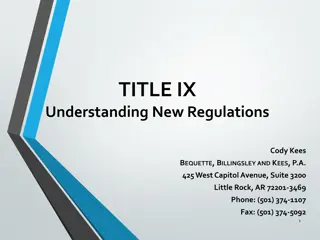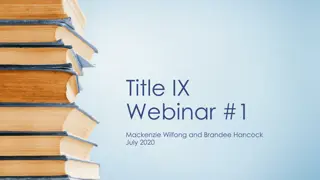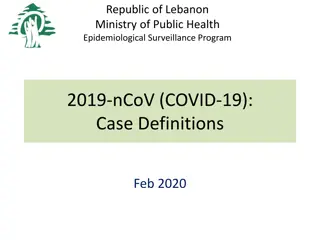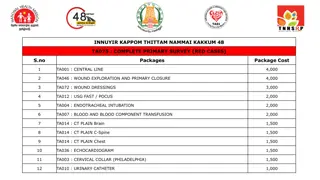Understanding the Role of Decision-Maker in Title IX Cases
This presentation discusses the role of decision-makers in Title IX cases following the new rules released by the U.S. Department of Education. It covers the requirements for live disciplinary hearings, cross-examination of witnesses, evaluation of evidence, burden of proof, and the definition of sexual harassment. Decision-makers are tasked with reviewing records, conducting hearings, making determinations, and providing written findings with disciplinary actions and remedies if needed. The process must adhere to due process requirements and be free from bias or stereotyping.
Download Presentation

Please find below an Image/Link to download the presentation.
The content on the website is provided AS IS for your information and personal use only. It may not be sold, licensed, or shared on other websites without obtaining consent from the author. Download presentation by click this link. If you encounter any issues during the download, it is possible that the publisher has removed the file from their server.
E N D
Presentation Transcript
Title IX Decision Maker Training: Part I Josh McKoon General Counsel
Title IX Changes On May 6, 2020, the U.S. Department of Education released Title IX rules on sexual harassment. This represents the first full rulemaking on a major Title IX issue since 1975 and the only one dedicated to sexual harassment. This presentation will cover the role of the decision maker in the Title IX process.
Role of the Decision-Maker Under the new rules, postsecondary institutions must hold live disciplinary hearings in sexual misconduct cases and allow cross- examination of witnesses. These hearings are quasi-judicial proceedings with certain due process guarantees similar to a criminal trial. Additionally, this process eliminates the single investigator model insofar as no decision-maker be the same person who serves as the Title IX Coordinator or investigator (1247). Decision-makers must not only review the record created by investigators, but also hear live testimony from the witnesses upon whom investigators have relied.
Role of the Decision-Maker (Contd) Witnesses relied upon by investigators who refuse to submit to cross-examination by the advisors appointed to represent the complainant and respondent cannot be given any evidentiary weight by the decision-maker. The decision-maker must listen to cross-examination to determine if questions asked are allowed under the rules, carefully applying the rape shield provisions. The decision-maker must understand the applicable burden of proof in determining whether or not a complaint is substantiated. The decision-maker must understand the definition of sexual harassment in order to apply that definition to the facts and circumstances of a particular case. The decision-maker must prepare a written determination regarding responsibility with findings of fact, conclusions about whether the alleged conduct occurred, rationale for the result as to each allegation, any disciplinary sanctions imposed on the respondent, and whether remedies will be provided to the complainant, which should include instructions on how to file an appeal.
Other Due Process Requirements All sexual harassment rules and training must be gender neutral and free of any sex bias or sex stereotyping. Investigators and decision-makers are prohibited from drawing conclusions about credibility based on a party s status (809). When an investigation begins, the parties must be given a written explanation of the allegations with sufficient details known at the time and with sufficient time to prepare a response before any initial interview. At least ten (10) days before the hearing, both parties must receive a written report that fairly summarizes the relevant evidence.
Understanding What Is Sexual Harassment Under Title IX First, any form of quid pro quo harassment that is, conditioning any educational opportunity or benefit on the granting of sexual favors constitutes a per se violation of Title IX, regardless of its severity or pervasiveness. Quid pro quo harassment constitutes conduct without any constitutional protection. Second, the final version of the regulations added the proviso that any form of sexual assault, dating violence, domestic violence, or stalking as defined by the Clery Act constitutes sexual harassment. These forms of misconduct are so serious in themselves that no finding of pervasiveness is required. Third, to violate Title IX, all other forms of unwelcome conduct must be so serious, pervasive, and objectively offensive that it effectively denies a person equal access to an educational program.
Understanding Title IX Jurisdiction of Colleges Now the phrase education program or activity includes locations, events, or circumstances over which the recipient exercised substantial control over both the respondent and the context in which the harassment occurs as well as any building owned or controlled by a student organization that is officially recognized by a postsecondary institution. This narrows the application of Title IX considerably from current practice. Finally, the new rules establish that Title IX jurisdiction only exists within the United States so that a college could not offer Title IX procedures for a study abroad program for example.
Burden of Proof The Decision-Maker must be able to apply a burden of proof to any complaint in order to make a determination. The burden of proof is the standard a party must satisfy to establish a fact. There are two standards available under the Title IX rules: preponderance of the evidence or clear and convincing evidence. Under the preponderance of the evidence standard, the burden of proof is met when the party with the burden convinces the finder of fact that there is a greater than 50% chance that the claim is true. Under the clear and convincing evidence standard, the fact finder must be convinced that the evidence is highly and substantially more likely to be true than untrue.
Determining What Is Relevant Evidence Only relevant questions may be asked of a party or witness. The decision-maker must determine as each question is posed whether or not it is relevant and if not, explain to the party s advisor the basis to exclude any question as not relevant. Relevant evidence is generally understood to be evidence that has any tendency to make a fact more or less probable than it would be without the evidence and the fact in question is of consequence in determining the action.
Understanding Rape Shield Provisions of Title IX Rules The decision-maker is required to screen the questions posed by advisors to determine if they are relevant. The decision-maker must also enforce state rape shield laws. The decision-maker must also deem irrelevant questions and evidence about a complainant s prior sexual behavior unless offered to prove that someone other than the respondent committed the alleged misconduct or the question/evidence is offered to prove consent.
Other Responsibilities of Decision-Maker The Decision-Maker must insure that there is either an audio/audiovisual recording of the hearing or that a transcript of the hearing is created. Upon the request of either party, the decision-maker must be prepared to provide the technological means to conduct the live hearing with parties located in separate rooms. The decision-maker must insure that both parties are provided with an advisor at the live hearing.
The Written Determination After the evidence has been reviewed fully and the live hearing has been conducted, it is up to the decision-maker to issue a written determination. The written determination may not simply state that a complaint is dismissed or sustained, but must make specific findings of fact based on a review of the evidence and witness testimony. Furthermore, the written determination must offer conclusions about whether the alleged misconduct occurred. The written determination must explain how the decision-maker applied the standard to determine that the burden of proof was or was not met. The decision-maker must also include specifics as to any disciplinary sanctions imposed on the respondent and whether remedies will be provided to the complainant.
Issuing Determination and Appeal The decision-maker must send the written determination simultaneously to both parties. The written determination must include specific instructions to the parties on how to file an appeal, including the deadline and where an appeal must be sent. Both parties are entitled to appeal the determination of the decision- maker on the following grounds: procedural irregularities that affected the outcome, newly discovered evidence that could affect the outcome, and/or Title IX personnel had a conflict of interest or bias that affected the outcome.
What is Next? TCSG will adopt policies and procedures implementing the new Title IX process effective August 14, 2020. Additional training will be offered to explain how to conduct a live hearing and the process of making and preparing a written determination under the new policies and procedures. The Office of Legal Services will be available to you as we transition into this new process and may also offer support services before, during, and after hearings.
